



Clothing: 3 quick-dry T-shirts, 2 merino briefs, 1 insulated mid-layer, 1 lightweight shell, 1 pair convertible trousers, 1 pair walking shoes, 1 pair compact sandals. Use three organization cubes labeled “tops”, “underwear”, “dirty”; roll tees, fold thermal layers flat; target total clothing weight under 2.5 kg.
Electronics & documents: smartphone with USB‑C cable, mirrorless camera + one zoom lens, one spare camera battery, 20,000 mAh power bank (roughly two full phone charges), universal adapter covering Type C/E/F plus local pin. Keep passport and printed reservations in a waterproof sleeve; store encrypted digital copies in cloud and on device; keep a photocopy of ID separate from originals.
Toiletries & meds: 100 ml compliant bottles of shampoo and body wash or a solid shampoo bar, 60 ml toothpaste tube, travel toothbrush, microfibre towel (40×90 cm), small travel detergent sachet. First-aid kit: adhesive bandages (10), blister plasters (4), paracetamol 500 mg (10 tabs), antiseptic wipes (10), antihistamine (10 tabs), personal prescriptions in original packaging with prescription copy.
Organization and safety: use a slim money belt or neck wallet kept under clothing; use it to store cash and ID. Carry a small dry bag to hold electronics and a clear zip-lock pouch to meet liquids rules at airport control. Compress bulky items using compression cubes with ~30–40% volume reduction; position heavy items close to the spine to stabilize the load. Aim for a loaded weight of 8–12 kg during multi-day hikes and under 7 kg during city-only outings.
Rucksack checklist – immediate recommendation: bring a 20–30 L bag with a rain cover, three compression cubes, a 10,000–20,000 mAh power bank, and a compact first-aid kit.
Place heavy items (shoes, electronics) closest to the back panel; keep documents and valuables in a waterproof pouch inside the main compartment or a secure hip-belt pocket. Roll lightweight clothing to save space; fold bulkier items flat. Reserve an external pocket for a refillable 0.6–1 L water bottle and quick-access snacks.
| Item | Quantity | Size / Notes |
|---|---|---|
| Rucksack | 1 | 20–30 L, with rain cover and padded straps |
| Compression cubes | 3 | Small (clothes), medium (electronics), small (documents) |
| Clothing | 3 shirts, 2 bottoms, 1 jacket | Quick-dry fabrics; one layer for warmth |
| Footwear | 1 pair walking shoes, 1 pair sandals | Wear bulkiest pair while commuting |
| Electronics | Phone, charger, power bank, adapter | 10,000–20,000 mAh; universal socket adapter |
| Toiletries | Small kit | Toothbrush, toothpaste, soap, microfibre towel; sealed bag |
| Medical | Compact kit + prescriptions | Bandages, pain relief, blister plasters; meds: supply = days planned +2 |
| Documents & money | Passport/ID, cards, cash | Waterproof pouch; photocopies kept separately |
| Security | Small lock, RFID wallet | Lock zippers; keep valuables close to body |
| Miscellaneous | Pen, notebook, headlamp | Multipurpose items save space |
Organization method
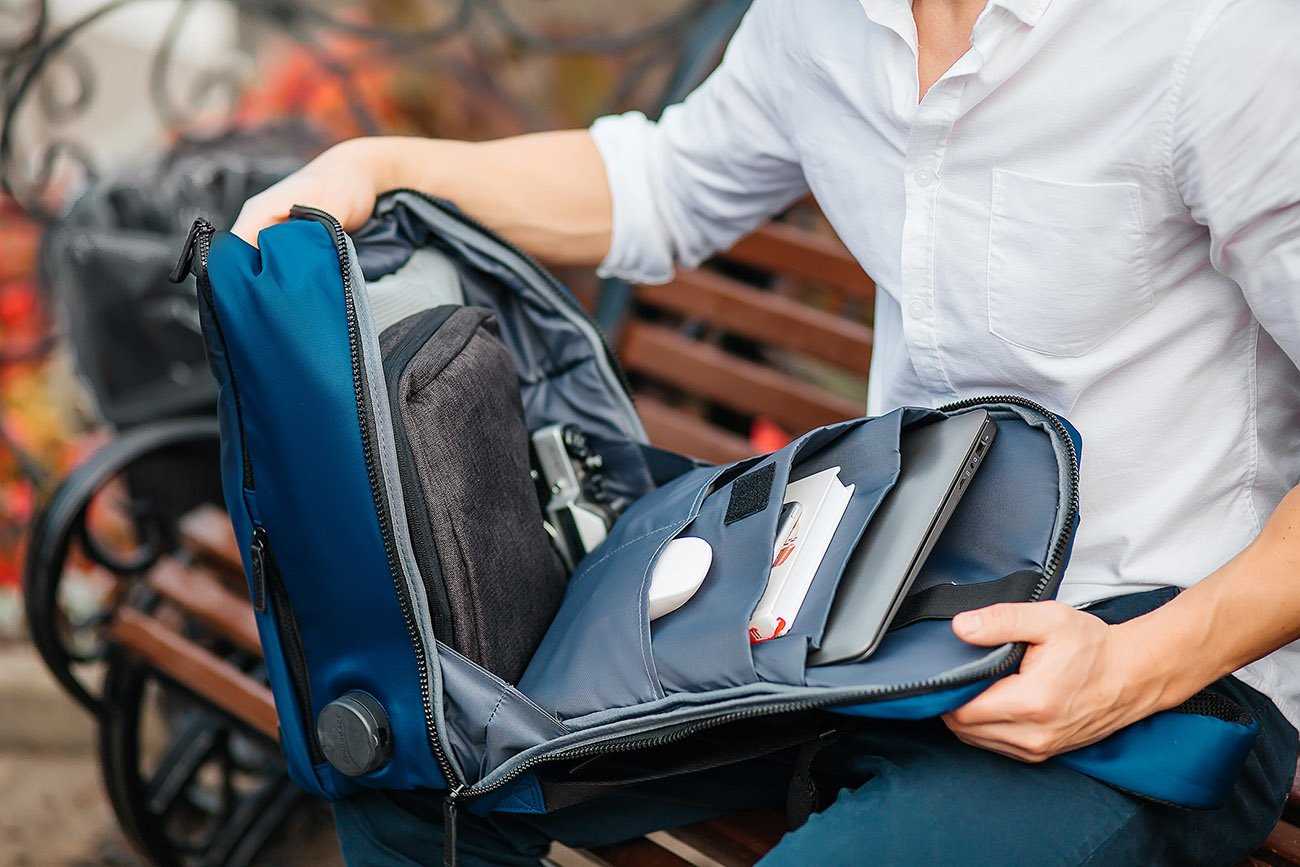
Stow heavy gear near your spine and low; place frequently used items in top/front pockets. Use a sealed toiletry bag to prevent leaks. Group electronics together and keep chargers in a single cube. Keep one outfit and critical meds in an easily reachable pocket.
Quick checklist
Rucksack, rain cover, compression cubes, power bank, universal adapter.
Clothes: 3 shirts, 2 bottoms, 1 jacket; wear heaviest shoes.
Hygiene: toothbrush, mini soap, microfibre towel, sealed bag.
Docs: passport/ID, cards, photocopies in waterproof pouch.
Health: compact first-aid, prescriptions (days planned +2), blister plasters.
How to pick the right rucksack size and compartment layout by trip length
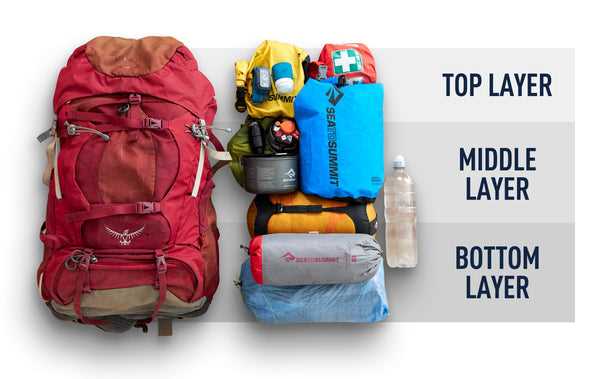
Choose a 30–45 L rucksack with clamshell access and a padded hip belt when trip length is 3–7 days; that size balances clothing capacity, a laptop sleeve, and room for a shoe or toiletry pouch.
Day outings (8–20 L): single main chamber, one zippered front pocket, internal mesh organiser and an external water-bottle sleeve. Keep the heaviest item close to the back panel to maintain stability and reduce shoulder strain.
Short getaways (25–35 L): clamshell or wide-top opening, external compression straps, hip-belt with pockets and a small removable toiletry pouch. Choose a sleeve that fits a 13–15″ device if commuting between meetings and sights.
3–7 day stints (35–50 L): multiple internal organisers or slim cubes, zippered bottom compartment for shoes or laundry, lockable main zipper points, and a padded hip belt with load lifters. Aim for a rucksack that allows centre-of-gravity adjustment via compression straps.
Extended trips and remote stints (50–70+ L): internal frame or stiffened sheet, top lid with quick-access pocket, detachable day bag or lid pack, dedicated hydration sleeve and reinforced hip fins. Allocate liters to bulky items: sleeping bag 8–12 L, bulky jacket 6–10 L, technical gear 10–20 L depending on activity.
Carry-on constraint: target ≤40–45 L and external dimensions near 55 × 40 × 20 cm (22 × 16 × 8 in) to meet most airline rules; choose a model with side compression to reduce volume at the gate and a front-access clamshell to speed security checks.
Fit test: load the rucksack with expected items, tighten the hip belt so weight rests on hips, adjust shoulder straps and sternum strap until the shoulder straps wrap comfortably without digging, and ensure the top of the rucksack sits 2–5 cm below the C7 vertebra. Measure torso length from C7 to the iliac crest and match that to the manufacturer’s size chart rather than relying on torso height alone.
Clothing items and exact quantities – hot, cold and mixed climates
Base guideline: carry underwear and socks equal to days between laundry; plan one top per day and one bottom every 2–3 days, adjust by activity level.
Hot climate – lightweight, moisture-wicking garments; recommended quantities on a 7-day trip without laundry:
- 3–5 moisture-wicking T‑shirts (3 when laundry available every 3 days, 5 when not)
- 2 lightweight shorts
- 1 long-sleeve sun shirt (lightweight, UV fabric)
- 1 pair convertible pants or 1 lightweight full-length pant
- 1 swimsuit
- 7 pairs underwear or 4 if laundering every 3 days
- 5 pairs socks (mix of low-cut and one trail sock)
- 1 wide-brim sun hat and 1 pair breathable walking shoes
- 1 pair sandals or flip-flops
- 1 lightweight night shirt or sleep shorts
Cold climate – layered system emphasizing insulation and protective outer shell; suggested quantities on a 7-day outing with limited laundry:
- Base layers: 2 thermal tops, 2 thermal bottoms (merino or synthetic)
- Mid layers: 2 insulating pieces (fleece + light wool sweater)
- Outer layers: 1 insulated jacket (down or synthetic) + 1 waterproof/breathable shell
- Pants: 2 warm pants (one insulated or lined, one softshell)
- Underwear: 7 pairs or 5 if able to wash mid-trip
- Socks: 4–5 heavy wool socks + 1 pair thin liner socks
- Head/hand accessories: 1 warm hat, 1 neck gaiter or balaclava, 1 insulated glove pair + 1 thin glove liner
- Footwear: 1 pair insulated boots + 1 pair camp shoes
- Sleepwear: 1 set thermal sleepwear
- Spare: 1 extra pair of socks and glove liners when temperatures drop below freezing
Mixed climate – daytime warmth with cool nights; balanced wardrobe for a 7-day plan with laundry every 3–4 days:
- Tops: 3 short-sleeve moisture-wicking shirts + 2 long-sleeve shirts (one light sun shirt, one wool-blend)
- Bottoms: 1 pair convertible pants + 1 pair shorts
- Layers: 1 lightweight insulated jacket + 1 compact rain/wind shell
- Underwear: 5 pairs (3 acceptable when laundry available)
- Socks: 4 pairs (mix of breathable and light wool)
- Accessories: 1 sun hat, 1 beanie, 1 neck buff (multipurpose)
- Shoes: 1 pair sturdy walking shoes + 1 pair sandals or trail sneakers
- Multipurpose items: 1 sarong or lightweight towel that doubles as cover, 1 pair leggings that can layer under shorts
- Evening option: 1 smart-casual shirt or dress for dinners or indoor events
Store prescriptions in carry-on: original containers plus a printed prescription and at least seven extra days’ supply.
Keep prescription medicines in their labelled pharmacy containers; include a paper or PDF prescription showing generic names and dosages, and a physician contact number. For controlled drugs or injectables carry a doctor’s letter on clinic letterhead. For insulin bring an extra pen/vial, blood-glucose meter, spare lancets, needles and a rigid sharps case; keep insulin with you in an insulated pouch or gel cooler and follow manufacturer storage guidance.
Medication quantities and useful over-the-counter items
Bring prescription quantity for the entire trip plus seven days’ reserve; for long stays request a duplicate prescription or an electronic one. Suggested OTC list with rough amounts: paracetamol/acetaminophen 20 × 500 mg, ibuprofen 20 × 200–400 mg, loperamide 10 tablets, cetirizine 10 × 10 mg (or loratadine equivalent), oral rehydration sachets 6, antacid sachets 10, antibiotic for severe infections only after consulting a clinician. Add adhesive dressings (10), antiseptic wipes (10), small digital thermometer, blister plasters (6), and motion-sickness tablets (6). Store all small items in a clear-seal pouch inside your carry-on for quick access at security.
Liquids, screening limits and spill-proof techniques
Carry-on liquid rule: containers must be ≤100 ml (3.4 fl oz) each and fit into one clear resealable bag no larger than 1 litre (quart-sized). Medically necessary liquids and syringes are exempt from the size limit but must be declared and screened separately; keep supporting documentation accessible. For checked luggage larger containers are allowed but protect them by sealing caps with tape, wrapping in a zip-top bag and placing inside the centre of a clothes bundle to cushion shocks. Use solid replacements to avoid liquid limits: shampoo bars, solid soap, deodorant sticks and toothpaste tablets. To prevent leaks in small bottles: fill to the brim to reduce air, place a piece of plastic wrap under the cap, then screw tight and slip into a sealed zip bag. Avoid aerosol toiletry cans in carry-on; if needed check airline rules before departure.
Confirm specific airline and country rules before departure and carry translations of prescription names if visiting non-English-speaking regions. If you expect to wash items during the trip check facility details and detergents at your accommodation – for machine recommendations see best heating washing machines.
Electronics, chargers, power-bank capacity and cable organization
Carry a concise kit: 1 phone, 1 laptop or tablet if needed, wireless earbuds, one camera or action-cam battery + charger (only if shooting), one portable SSD or 2 SD cards, and a universal plug adapter with at least one USB-C PD port.
Power banks and airline limits
Recommended capacities by use: day outings – 10,000 mAh (≈37 Wh); multi-day without reliable outlets – 20,000 mAh (≈74 Wh); heavy-device days – 26,800 mAh (≈99 Wh). Do not bring batteries >100 Wh (≈27,000 mAh at 3.7 V) unless airline approval exists; some carriers allow up to 160 Wh with permission. Conversion: Wh = (mAh × V) / 1000 (use V = 3.7 for typical lithium banks). Always carry power banks in carry-on luggage, keep terminals covered or in original packaging, and check the printed Wh rating before boarding.
Chargers, cables and pouch layout
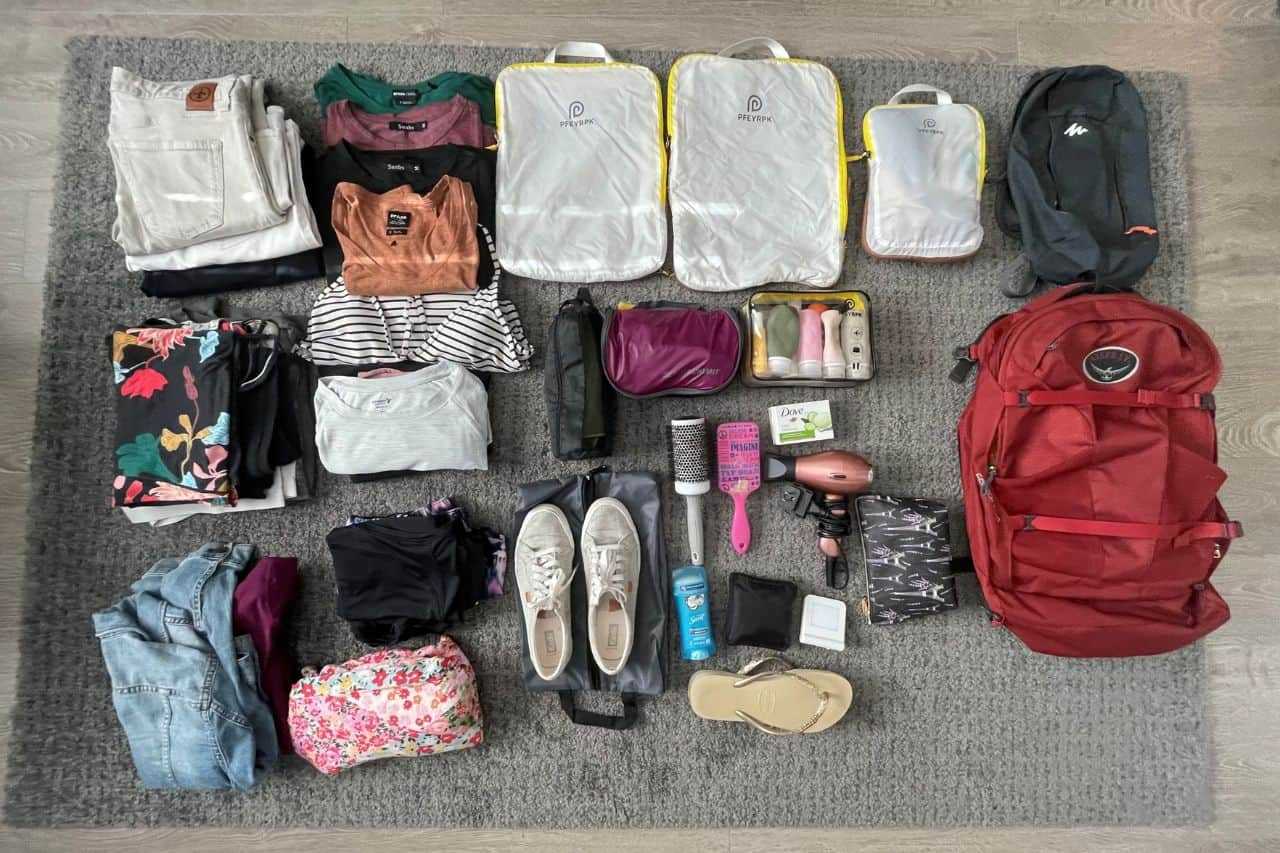
Charger selection: one GaN USB-C PD multiport brick with total output 65–100 W and at least one 45 W-capable port covers most modern laptops and phones; add a small 12 W USB-A brick for legacy accessories. Cable kit: phone – 1× 0.25–0.5 m USB-C to USB-C for power-bank use plus 1× 1–1.5 m for bedside; laptop – 1× 60–100 W USB-C cable, 1.5 m; camera/SSD – 1× short USB-C or micro-B cable; earbuds – 1× short charging cable. Use different colors or small heat-shrink bands to label cable ends and mark device type.
Organization method: store chargers and short daily-use cables in a top-access tech pouch with elastic loops and a zip mesh pocket; longer cords, spare batteries and adapters go into a flat second pouch. Coil cables loosely (single-loop or figure-8 with gentle tension) and secure with reusable Velcro straps; avoid tight wraps that stress connectors. Keep SD cards in a rigid case, label each card with capacity and device, and place silica gel in pouches to reduce moisture.
How to store trip documents, money and digital backups to prevent loss or theft
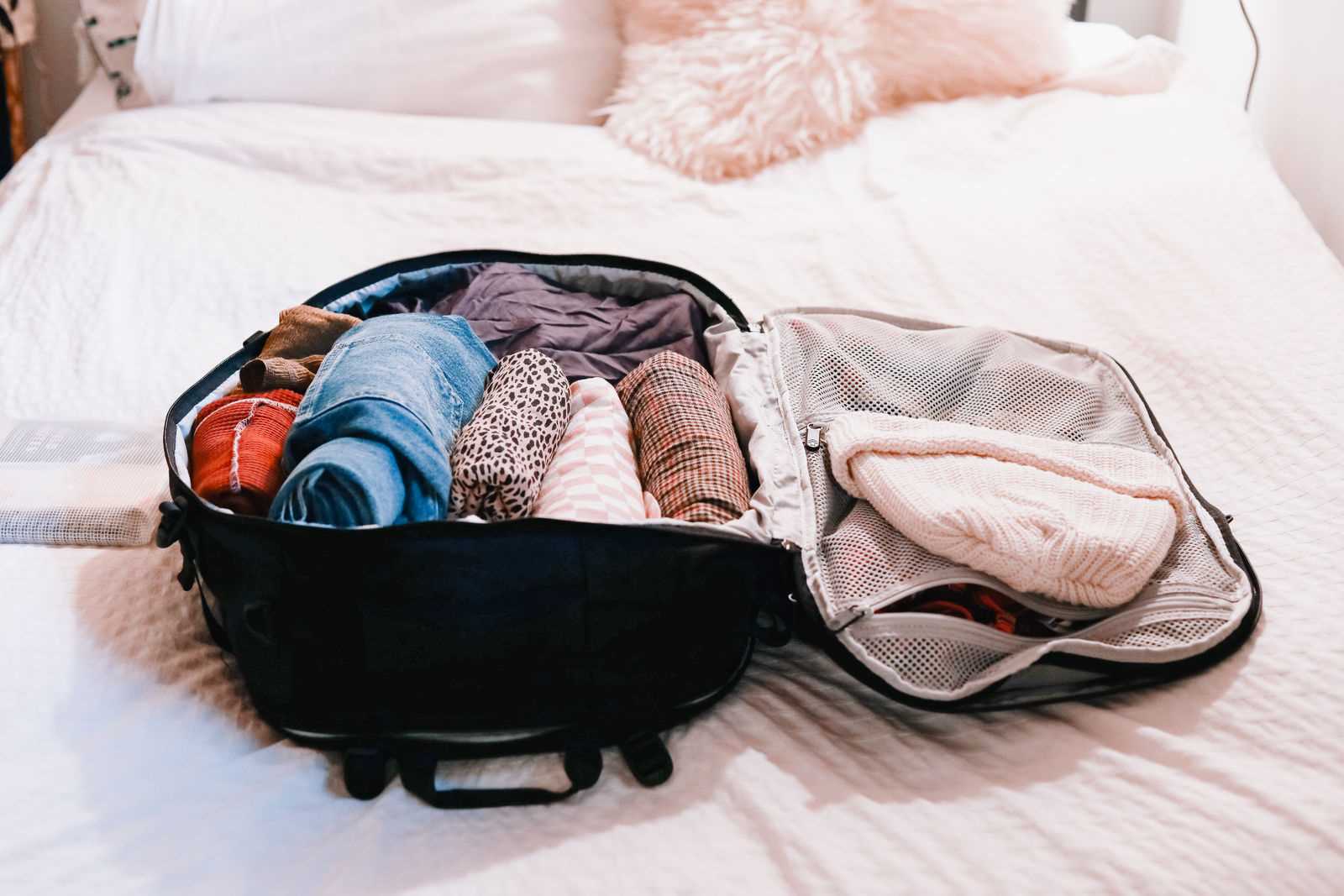
Carry two complete physical sets of ID and payment cards: one set on your person in an RFID-blocking neck wallet or money belt, and a second set sealed in a labelled envelope inside the accommodation safe or a locked hard-shell case.
Physical documents and cash
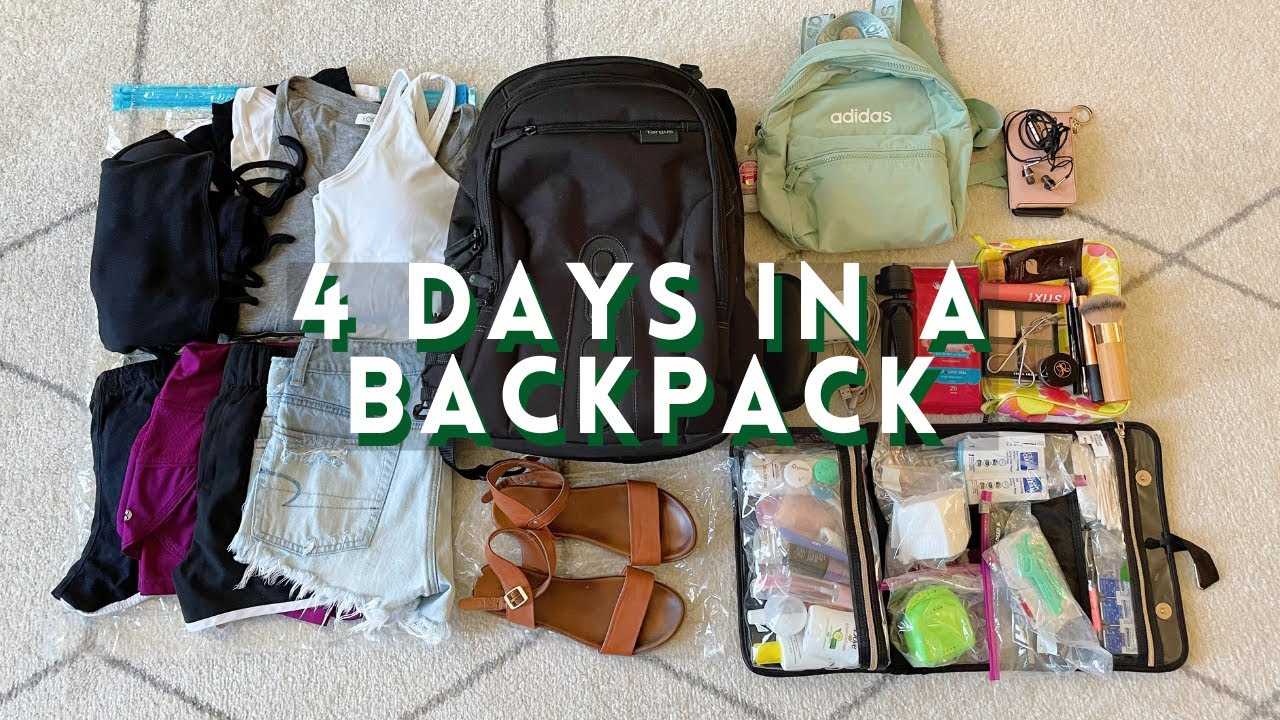
Adopt the three-location rule: split cash/cards across (A) on-body small-change (USD/local currency $50–150 depending on destination), (B) hidden clothing or inner-zip pocket with $150–300 emergency cash, (C) locked storage in room luggage or safe holding primary passport copy and an extra bank card. Carry one credit and one debit card from different networks (Visa + Mastercard recommended).
Store original passport in the accommodation safe whenever not required; keep a laminated photocopy and a single sealed paper copy in a separate zipped pocket. Use RFID sleeves for all contactless cards and a passport cover with RFID lining.
Use tamper-evident cable ties on suitcase zips, small keyed or TSA-approved locks on compartments, and secure external straps or connectors – see best luggage connectors for options that prevent easy theft of attached bags.
Encrypted digital copies and account protection
Create encrypted scans of passport, visas, insurance, and tickets: save as PDFs, encrypt with AES-256 (7‑Zip or VeraCrypt), upload encrypted archive to two cloud providers and copy to an encrypted USB stick. Keep one USB stick in locked storage and one left with a trusted contact at home.
Use a reputable password manager to store login details and enable two-factor authentication on bank and email accounts; generate and print 2FA recovery codes, store one printout with paper documents and one encrypted copy online. Consider a hardware security key (U2F) for banking and primary email where supported.
Enable full-disk encryption on phone and laptop, activate device location + remote-wipe, and disable automatic Wi‑Fi/airdrop connections. Access financial services only over a paid VPN or cellular data; never log into banking apps on public networks without VPN.
If SIM swaps are a concern, set a SIM PIN, add a carrier account PIN where available, and avoid using SMS-based 2FA for critical accounts; prefer app-based authenticators or hardware keys instead.
FAQ:
What clothes should I pack for a one-week trip with mixed weather?
Choose layers: a lightweight base layer (breathable T-shirts or long-sleeve shirts), a warm mid-layer (fleece or thin sweater), and a waterproof shell. Pick neutral colors that mix and match so you can reuse items without packing many outfits. Bring quick-dry underwear and two to three pairs of socks, plus one pair of comfortable walking shoes and one pair that can be dressed up slightly. A compact rain jacket or small umbrella will handle showers. Roll clothes or use packing cubes to save room and keep items organized.
How should I organize electronics and chargers to avoid tangles and lost power?
Keep cables and small devices in a dedicated pouch or cable organizer with separate compartments or elastic loops. Label chargers with a small tag or different colored tape so you can tell them apart quickly. Bring a multi-port USB charger for hotel rooms and a high-capacity power bank for long transit days; check airline rules for battery capacity if you fly. Include a compact international adapter if traveling to multiple countries. Store backups of important files on cloud or a small external drive, and carry one spare charging cable in your carry-on to reduce risk of being without power.
Which medications and first-aid items are worth packing for international travel?
Bring any prescription medications in their original bottles plus a copy of the prescription and a short note from your doctor explaining medical need. Pack a small first-aid kit containing adhesive bandages, blister pads, antiseptic wipes, sterile gauze, medical tape, and antibiotic ointment. Include common over-the-counter items you use: pain reliever, antihistamine, antacid, anti-diarrheal, and oral rehydration salts. If you get motion sickness, include appropriate medication. A basic thermometer and tweezers can be useful. Keep all medicines in your carry-on and research local restrictions for prescription drugs at your destination.
What practical tips will help me reduce backpack weight without sacrificing usefulness?
Prioritize multi-use items: a scarf that doubles as a blanket, a jacket with multiple pockets, or a single outlet power adapter with several USB ports. Limit shoes to two pairs and choose lightweight fabric clothing over heavy materials. Replace full-size toiletries with travel-sized bottles or solid bars (soap, shampoo bars), and consider a tiny refillable bottle for sunscreen or moisturizer. Carry digital copies of books and documents instead of paper versions. Lay out everything you plan to bring, then remove one non-critical item from each category (clothing, toiletries, gadgets) to trim weight. Wear your heaviest layers while traveling to keep them out of your pack.









